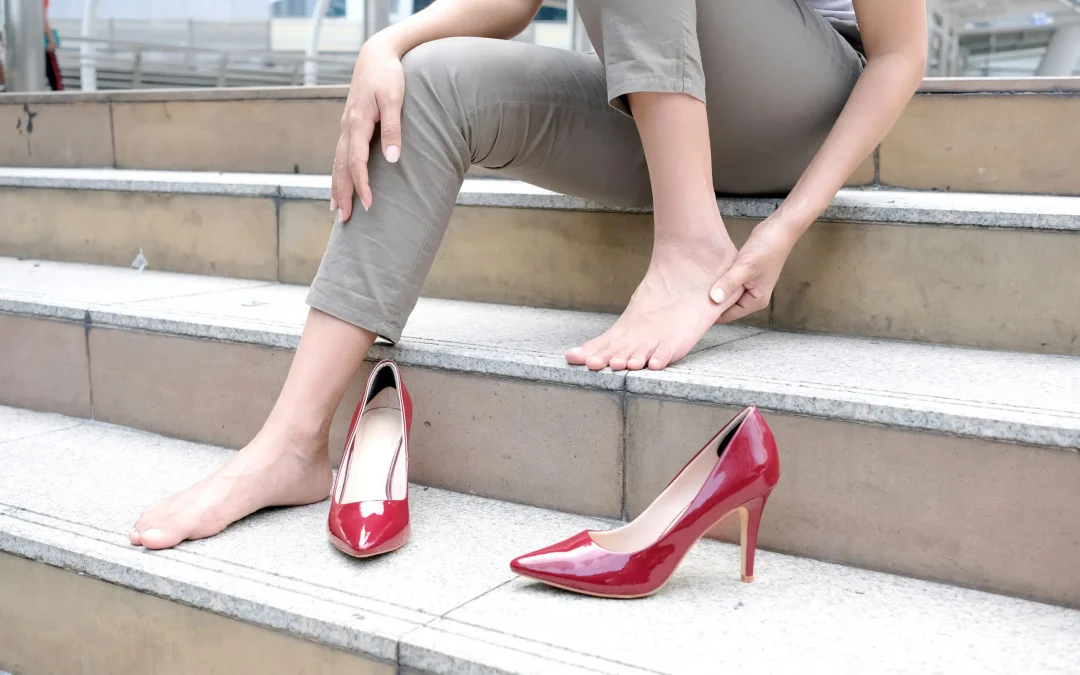If you follow sports news, you probably know that plantar fasciitis is a common injury. Often there are stories about professional athletes being sidelined for weeks because of it. For some, the injury causes pain that lasts for months or even years.
So if you live an active lifestyle and want to keep it that way, it’s a good idea to take some preventative measures.
What is Plantar Fasciitis?

This injury affects the plantar fascia. That’s the tissue that runs along the bottom of your foot from your toes to your heel bone. Normally, that tissue behaves like a shock absorber and supports the arch of your foot.
The injury is caused by too much tension and stress leading to small tears in that tissue. Because it’s related to stress and overuse, it’s common among runners and athletes in high-impact sports.
But you don’t have to be running marathons to get plantar fasciitis. Sometimes, just wearing shoes that don’t provide proper support can be enough to cause it. In fact, plantar fasciitis is among the most common causes of heel pain.
What Does it Feel Like?
The symptoms typically involve stabbing pain near the heel, which is at its worst with your first steps in the morning. And the pain tends to intensify after exercise rather than during it.
How to Prevent or Heal It
Whether you’re being proactive to avoid an injury, or have already felt the pain of plantar fasciitis, here are a few things that can help:
Stretch it Out
- Toe stretches: Sit in a chair and cross one leg over the other. Then grab hold of all your toes and gently pull them up towards you.
- Calf stretches: Stand near a wall with one foot in front of the other, then lean towards the wall while keeping your back knee straight and your heel on the ground.
- Towel curls: Lay a hand towel on a smooth floor, then sit in a chair and put one foot on it. Then, using only your toes, scrunch the towel towards you bit by bit.
Go Low Impact
High-impact activities like running and jumping put stress on the plantar fascia. So, focusing more on low-impact exercise is a great way to stay active while avoiding heel pain. Some good examples include swimming, cycling, rowing, and elliptical.
Get a Foot Massage
Some runners swear by massage as a way to relieve the pain of plantar fasciitis. There are methods that make it easy to do yourself, such as sitting in a chair and using your foot to roll a hard, round object (like a bottle or a ball) back and forth.
But a massage therapist can do a better job. Through treatments like deep tissue massage, they can relieve soft tissue strains, improve circulation to the injury, and help you heal quicker.
Get Some Support
Getting some good orthotic inserts or orthotic shoes can make a world of difference. Firstly, by providing proper support and cushioning, they can provide some immediate relief from pain. Secondly, orthotics will take the stress off your plantar fascia, helping you to heal quicker.

In addition, when you’re suffering from heel pain, it can cause you to change your walking style as you try to accommodate it. This can lead to issues in other areas of the body, by putting added stress on your knees and hips for example. But orthotics avoid this problem by accommodating for your pain while keeping you moving naturally.
The most important thing is to make sure you get your orthotics custom made because the ones you can buy off-the-shelf can actually make matters worse. That’s because they’re a one-size-fits-all solution, in contrast to custom orthotics which take into account your unique issues and needs.
To design custom orthotics, a specialist will assess your injury, the shape of your feet, and the way you move. They’ll also take an impression of your feet to ensure your orthotics are perfectly tailored to you.
Start Living Pain Free
Now that you know some of the ways to prevent plantar fasciitis and relieve foot pain, it’s time to put them into action. Try out the methods above and you’ll see how easy it can be to leave foot pain behind you.
